Clearing The Skies
Linking Aviation Emissions to Climate Impacts on At-Risk Communities

By: Shanyu Gowdu
Background
- There is a climate CRISIS
- Given a dataset of Aviation Emissions for different countries
- Wanted to explore the connection to climate change
- Specifically, the impacts on countries whom are in the most danger

Why Aviation?
- The aviation industry accounts for around 2-3% of global CO2 emissions.
- While this might seem small compared to other sectors like energy or manufacturing, aviation is a growing industry, and emissions from aviation are not evenly distributed across the globe.

*I did not create this visualization* - provided by aviationbenefits.org
Why It Matters
- Aviation emissions are released high in the atmosphere, where they have a disproportionately high impact on climate change due to the altitude at which they occur
- Aviation is also one of the hardest sectors to decarbonize due to technological limitations
- Expecting huge rapid growth
*I did not create this visualization* - provided by Oliver Wyman Analysis

Disproportionate Vulnerability
- ND-Gain Climate Vulnerability score: measures a country's exposure, sensitivity and ability to adapt to the negative impact of climate change.
- The irony is that the countries with high vulnerability scores—countries like Haiti, Madagascar, and Vanuatu—produce negligible aviation emissions but face the greatest climate risks.
Total Aviation CO2 Emissions vs Climate Vulnerability Score

Total Aviation CO2 Emissions vs Climate Vulnerability Heat Map
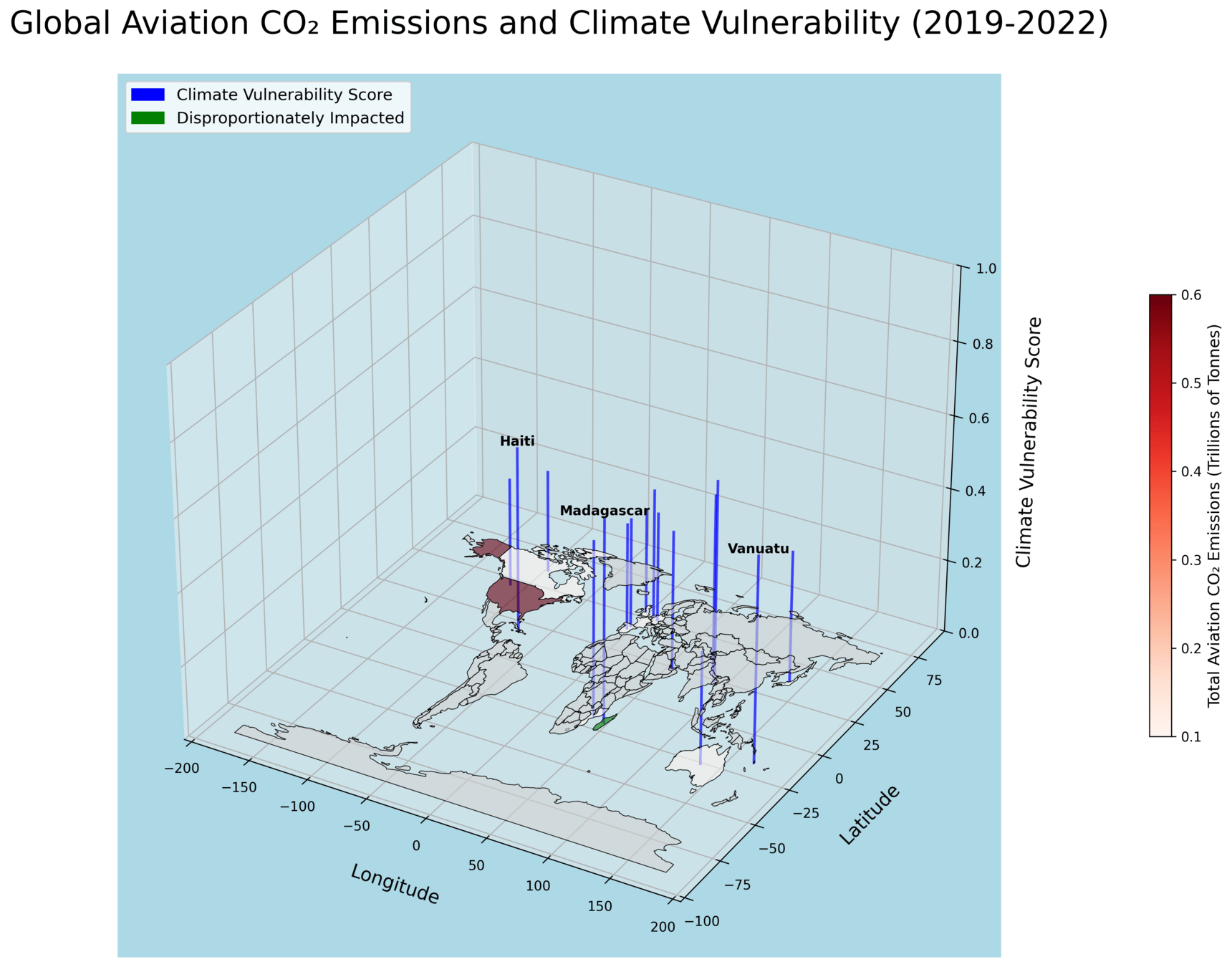
Methodology
- Data Collection: OECD - Aviation Emissions, University of Notre Dame - Climate Vulnerability Score, World Bank - CO2 emissions and GDP, United Nations - Population
- Data Cleaning: Used Microsoft Excel and Generative AI to filter/clean data for 20 specific countries
- Visualizations: Plotly for interactive, real-time visualizations and Matplotlib for static
- Predictive Model: I used linear regression from the Scikit-learn package to predict aviation emissions for countries based on their GDP, population, and CO2 emissions.
Predictive Modeling
- Feature Selection: The features I chose for the predictive model were GDP (current US$), Population(Thousands), and CO2 Emissions (Metric Tons), as they are key factors influencing aviation activity and emissions.
- Target Variable: The target variable was Aviation Emissions (Tons), which I aimed to predict based on the selected features.
- Train-Test Split: I split the data into training and test sets using train_test_split, with 80% of the data for training and 20% for testing. This helped ensure that the model was trained on most of the data but validated on unseen data to test accuracy.
- Model Training: I used Linear Regression (LinearRegression class from Scikit-learn) to train the model on the training data. The model learned the relationship between GDP, population, CO2 emissions, and aviation emissions.
Predictive Modeling
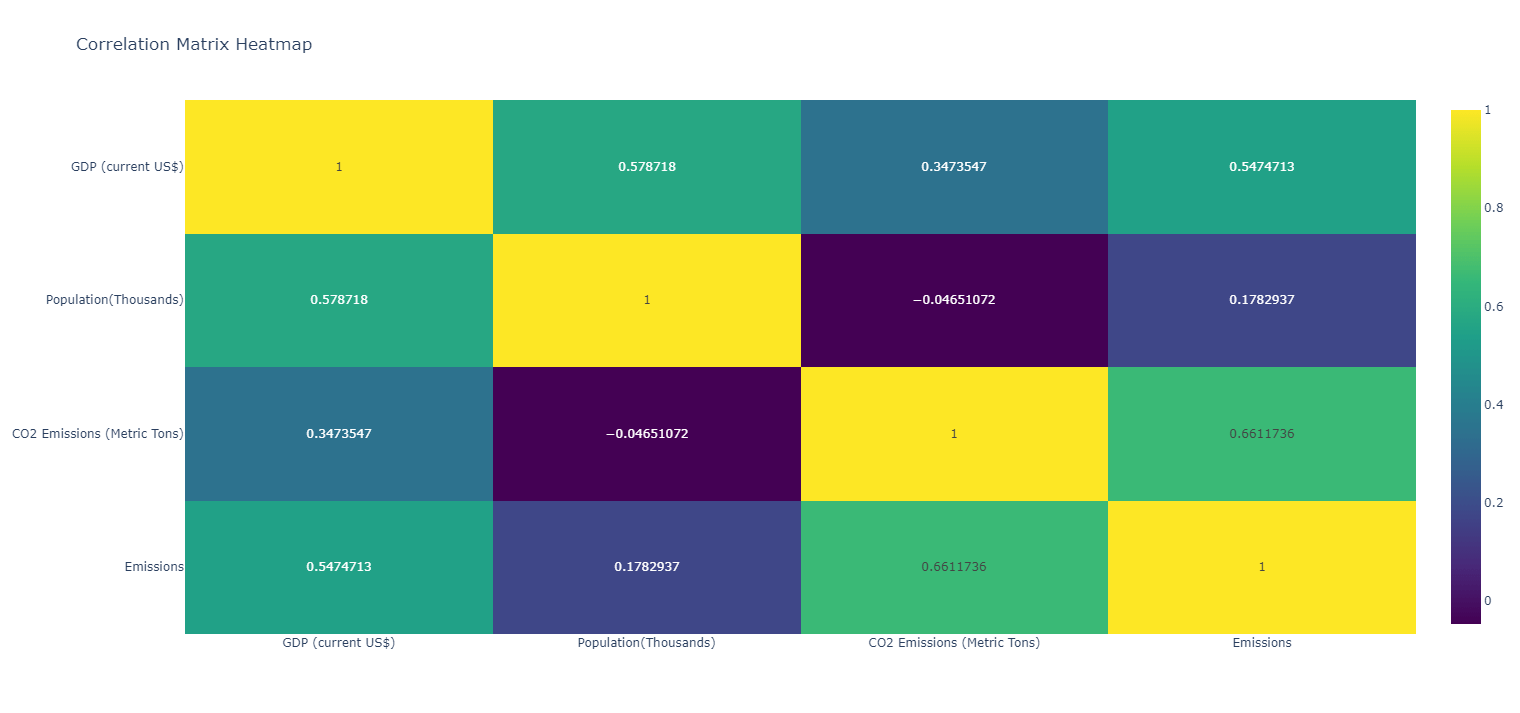
Predictive Modeling
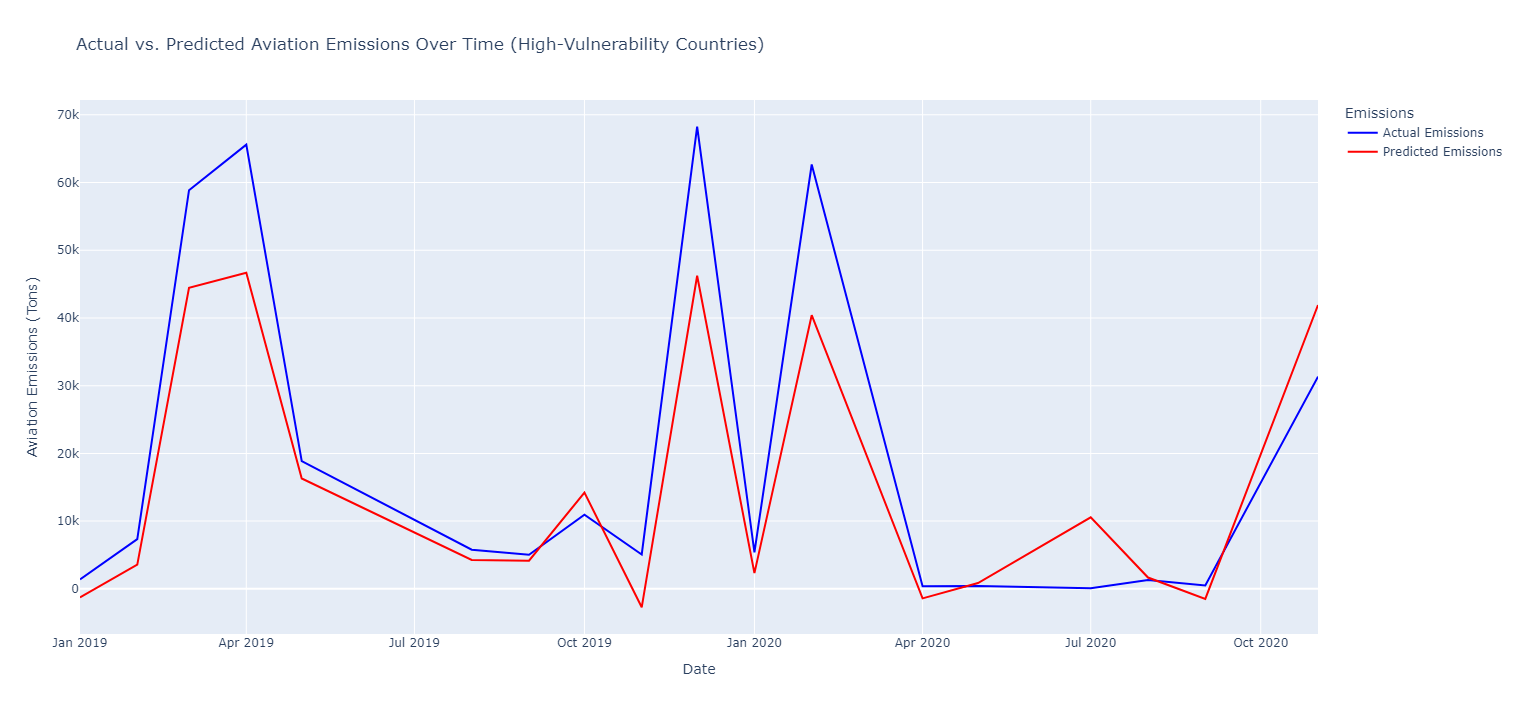
Predictive Modeling
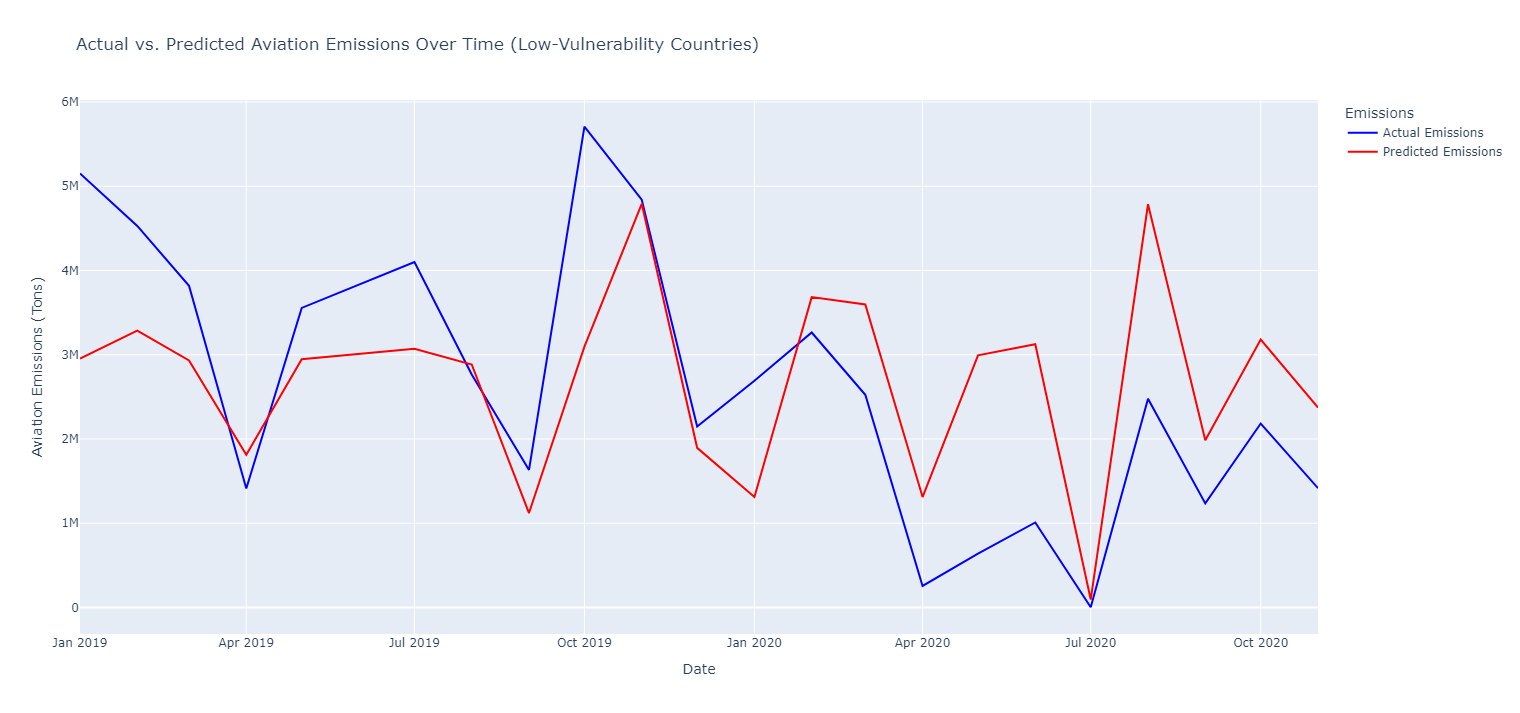
Predictive Modeling
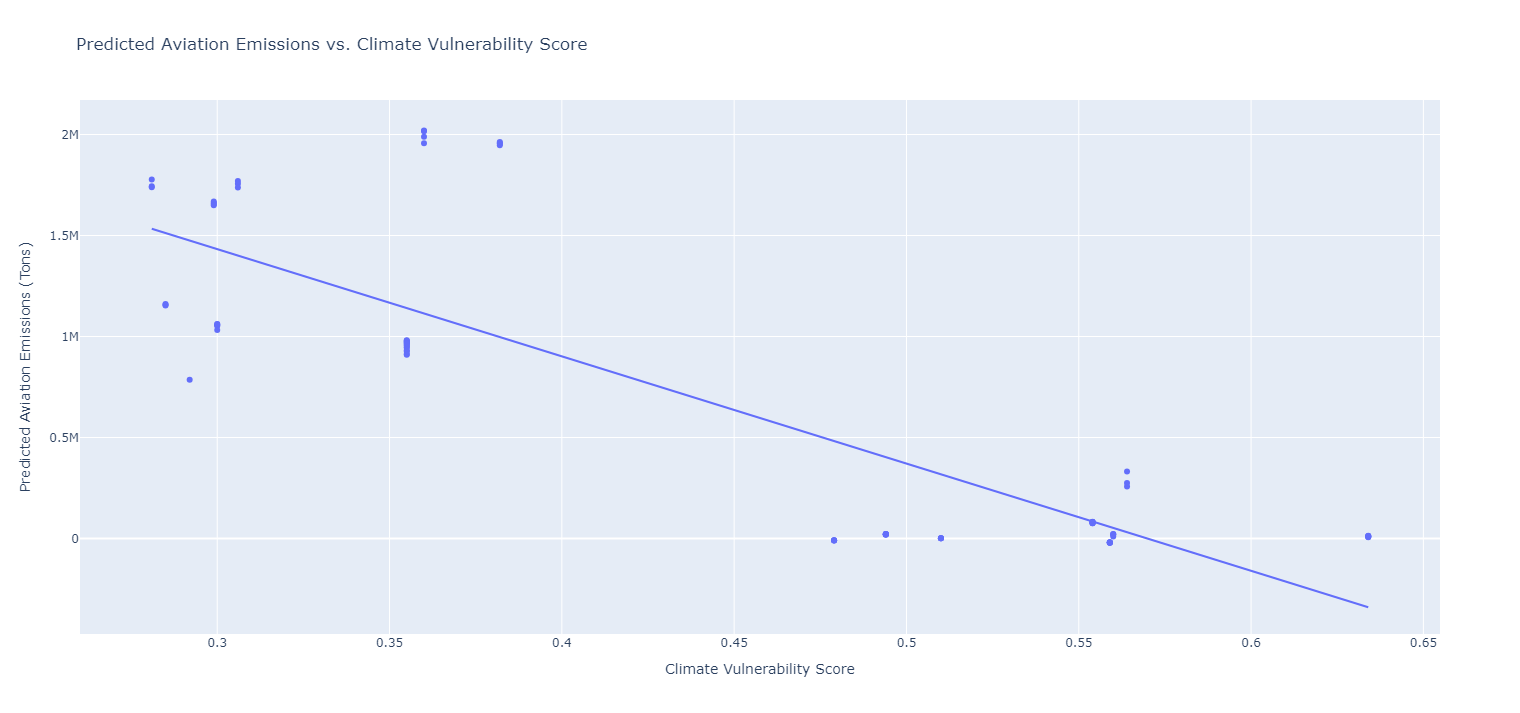
Improving Research
-
Incorporate More Comprehensive Variables: Expand the range of variables
-
Time-Series Analysis Improvements:
Longer Time Period, Seasonal Adjustments
-
Improve Predictive Modeling: Non-linear models, Cross-validation, Hyperparameter tuning
-
Scenario-Based Modeling: predict how different policy implementations (e.g., carbon taxes, SAF adoption) might impact future aviation emissions
-
More Advanced Data Visualizations: Interactive Dashboards - Allow users to view future projections under scenario-based modeling
Moving forward - Globally
- Policy Changes: Global Carbon Tax for Aviation, Frequent Flyer Levy, Sustainable Aviation Fuel (SAF) Incentives, International Collaboration and Regulatory Alignment
- Investment in Rail: In the U.S., 2/3 of aviation emissions come from domestic flights, largely because of the lack of affordable reliable interstate public transportation like high-speed rail.
- Enhanced Carbon Offsetting: Improve carbon offset programs to ensure they genuinely benefit high-vulnerability countries.
- Aviation Dataset: https://data-explorer.oecd.org/vis?tm=aviation&pg=0&snb=24&df[ds]=dsDisseminateFinalDMZ&df[id]=DSD_AIR_TRANSPORT%40DF_AIR_TRANSPORT&df[ag]=OECD.SDD.NAD.SEEA&df[vs]=1.0&dq=.Q.......&pd=%2C&to[TIME_PERIOD]=false
- GDP Dataset: https://datacatalog.worldbank.org/search/dataset/0037712/World-Development-Indicators
- Population Dataset: https://population.un.org/wpp/Download/Standard/MostUsed/
- CO2 emissions Dataset: https://data.worldbank.org/indicator/EN.ATM.CO2E.PC?end=2020&start=1990&view=chart
- Generative AI was used to create code snippets
Citations
Palette
By shan gowd
Palette
- 134